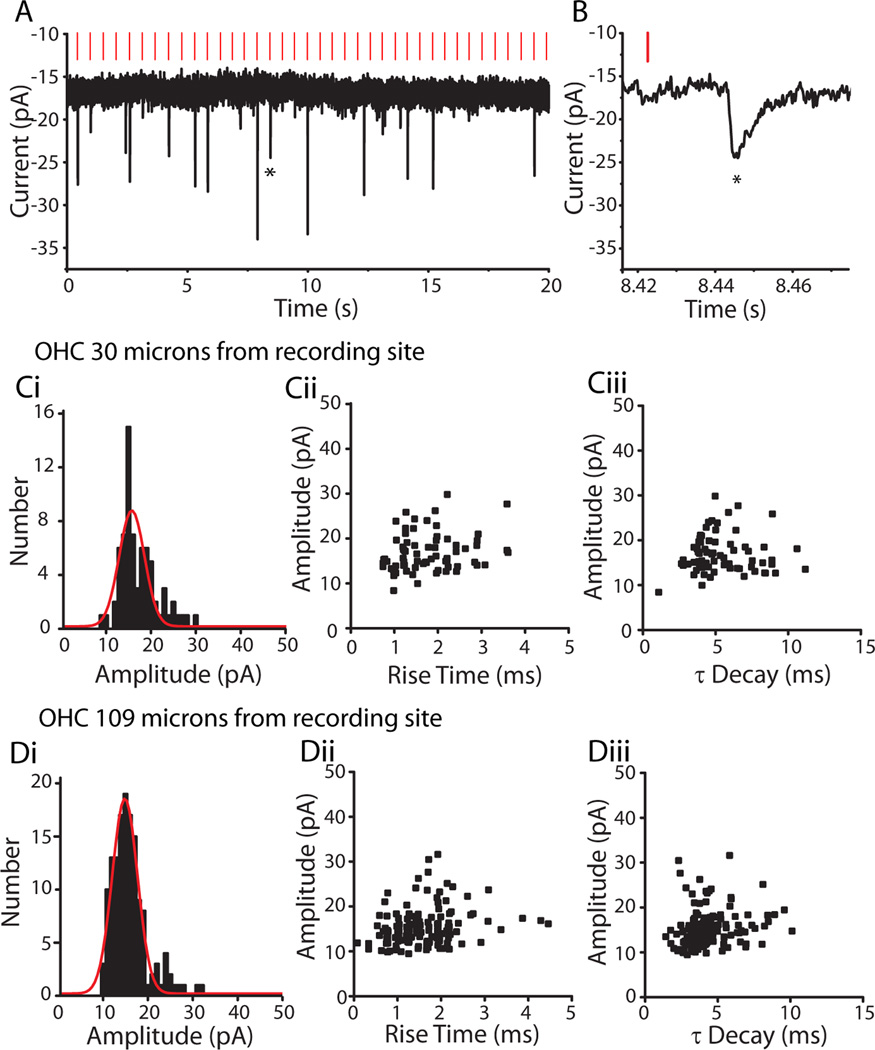Figure 4.
EPSCs evoked in type II afferents by OHC stimulation. A. Voltage-clamp recording from a type II afferent dendrite, holding potential −90 mV. Vertical red lines indicate the timing of a ‘puff’ of high potassium solution onto a nearby OHC, here 30 microns away. EPSCs visible as downward deflections followed a fraction of puffs onto the OHC. B. Zoom of evoked EPSC from ‘A’ indicated by star. Ci. Amplitude histogram of EPSCs evoked in a type II afferent by repeated stimulation of a single OHC located 30 microns from the recording site. Red curve represents Gaussian fit of data. Cii. Amplitude by 10–90% rise time scatterplot of EPSCs from ‘Ci’. Ciii. Amplitude by time constant of decay (single exponential fit) scatterplot of EPSCs from ‘Ci’. Di. Amplitude histogram of EPSCs evoked in the same type II afferent as in ‘Ci’, during repeated stimulation of a different OHC 109 microns from the recording site. Red curve represents Gaussian fit of data. Dii. Amplitude by 10–90% rise time scatterplot of EPSCs from ‘Di’. Diii. Amplitude by time constant of decay (single exponential fit) scatterplot of EPSCs from ‘Di’.

